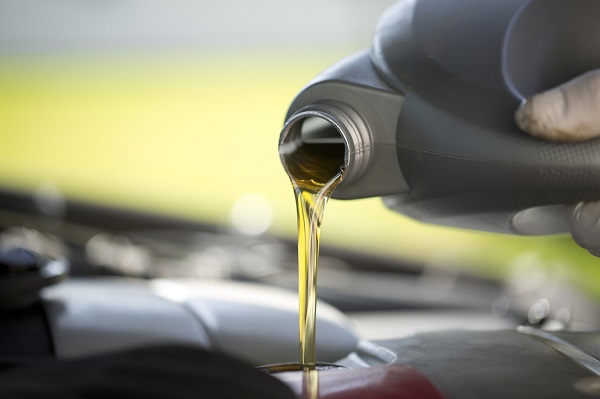Skydrol hydraulic fluid is a critical component in the aviation industry, renowned for its superior performance and reliability in hydraulic systems. Skydrol is widely used in commercial and military aircraft to ensure the smooth operation of hydraulic mechanisms such as landing gear, brakes, and flight control systems. Maintaining aircraft efficiency and safety requires an understanding of its unique features and uses. This guide explores five key facts about Skydrol hydraulic fluid, providing detailed insights into its composition, benefits, and usage in aviation.
1. Chemical Composition and Properties
Skydrol hydraulic fluid is known for its advanced chemical composition, which sets it apart from other hydraulic fluids. It is a fluid with a phosphate ester basis that has been designed with additives to improve performance in harsh environments. Skydrol’s unique purple color and remarkable fire resistance are a result of its combination. Skydrol is less flammable than hydraulic fluids based on minerals, which considerably lowers the danger of fire in hot conditions. Because of the fluid’s great thermal stability and low volatility, it is perfect for use in aviation hydraulic systems, where dependability and safety are crucial. Furthermore, Skydrol has outstanding lubricating qualities that reduce wear and tear and lengthen the operating life of hydraulic components.
2. Fire Resistance and Safety Benefits
The fire resistance of Skydrol hydraulic fluid is one of its most important benefits. High pressure and temperature are present in hydraulic systems used in aircraft, which might result in fire danger if the fluid catches fire. Because of its phosphate ester foundation, Skydrol is naturally fire-resistant and can endure temperatures of up to 200°C (392°F) without catching fire. This fire resistance adds an extra degree of security for flying cars and their occupants, making it a crucial safety component. In the event of a hydraulic system failure, Skydrol reduces the risk of fire, giving more time for emergency procedures and minimizing potential damage. This property is especially important in military and commercial aviation, where safety standards are strict, and the consequences of hydraulic system failures can be disastrous.
3. Compatibility with Aircraft Materials
Compatibility with aircraft materials is another important factor that distinguishes Skydrol hydraulic fluid. The hydraulic fluid used by an aircraft must be compatible with the many materials that make up its hydraulic system. These materials include metals, elastomers, and composites. Skydrol’s composition ensures that it won’t rust, degrade, or have any other unfavorable impacts on a variety of components that are often found in airplanes. Because of the fluid’s low corrosivity, crucial parts like actuators, valves, and pumps are better protected, which lowers maintenance costs and downtime. Skydrol’s compatibility with elastomers also guarantees that gaskets and seals stay intact, preventing leaks and preserving system integrity. Skydrol is a favored option for several aircraft manufacturers and maintenance companies because of its extensive compatibility.
4. Maintenance and Handling Requirements
Proper maintenance and handling of Skydrol hydraulic fluid is critical for maximizing its benefits and extending the life of aircraft hydraulic systems. Skydrol’s unique chemical makeup necessitates certain handling techniques in order to preserve its efficacy and safety features. Skydrol must be stored in dry, clean environments to avoid contamination, which might erode its fire resistance and lead to system failures. To avoid chemical reactions, maintenance personnel must store and transfer materials that are compatible, such as stainless steel or certain plastics. To guarantee maximum performance, fluid conditions must also be regularly monitored, including testing for contaminants and acidity. Proper Skydrol handling training for maintenance personnel is critical to preventing mishandling and ensuring the hydraulic systems’ safety and operation.
5. Environmental and Health Considerations
Although Skydrol hydraulic fluid has several benefits in terms of performance and safety, there are definite environmental and health risks as well. While phosphate ester bases are beneficial for fire resistance, they can pose environmental risks if not properly managed. Skydrol leaks and spills have the potential to harm land and water; thus, proper disposal and spill control measures are required. In addition, extended contact with Skydrol may irritate the skin and eyes. Thus, maintenance workers who handle the fluid must wear personal protective equipment (PPE). It is essential to adhere to appropriate disposal standards and use eco-friendly techniques in order to reduce the environmental effects of Skydrol. By following these recommendations, the aviation sector can guarantee safe and sustainable operations while balancing the advantages of Skydrol with its environmental obligations.
Conclusion
Understanding the unique properties and benefits of Skydrol hydraulic fluid is essential for its effective use in aviation. Its advanced chemical composition, fire resistance, compatibility with aircraft materials, maintenance requirements, and environmental concerns make it an essential component in ensuring aircraft safety and efficiency. By recognizing these key facts, operators and maintenance personnel can optimize the use of Skydrol, ensuring reliable and safe hydraulic systems in aircraft.
Also Read: Role of Hydraulic Companies in Saudi Arabia’s Industrial Growth




